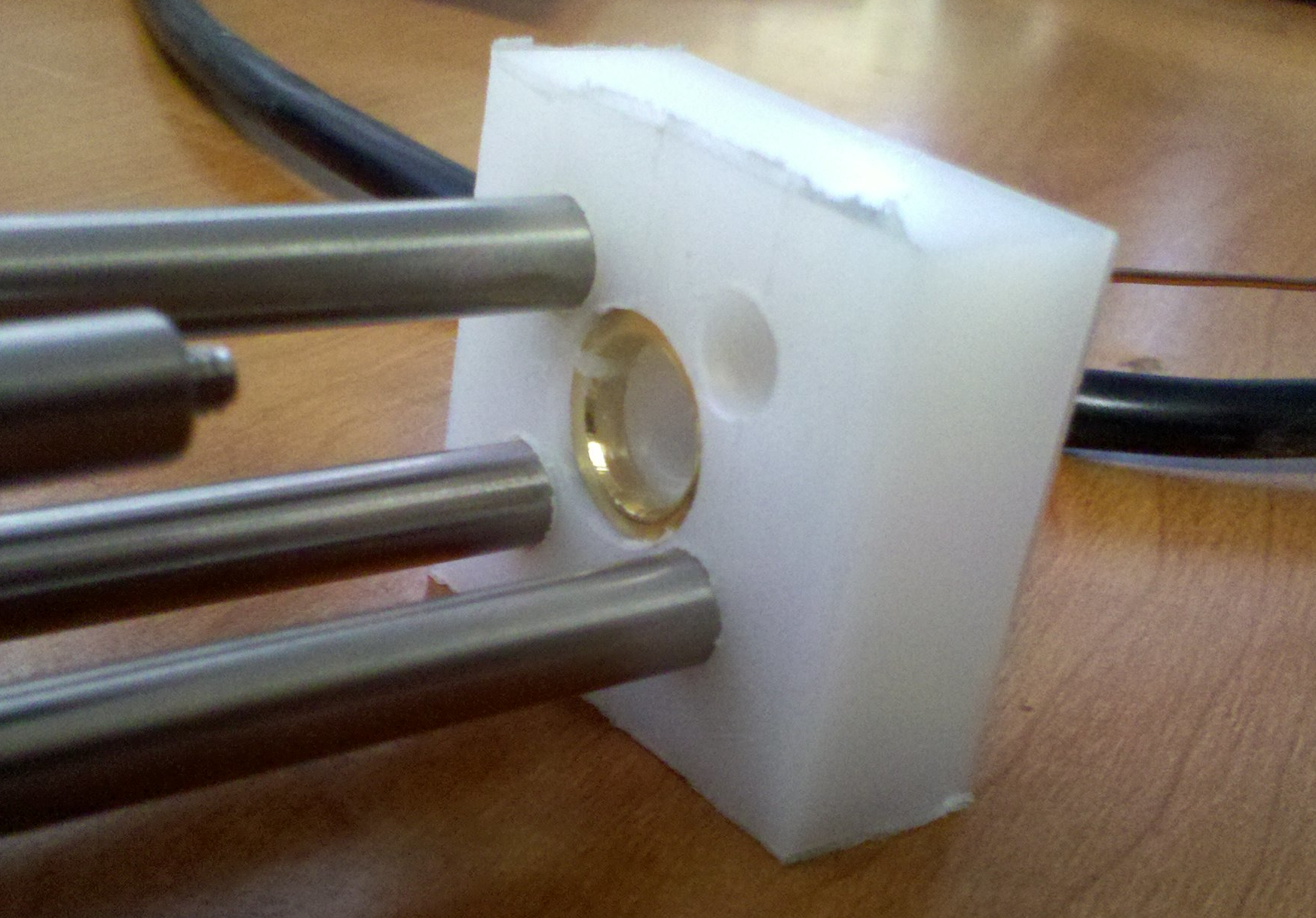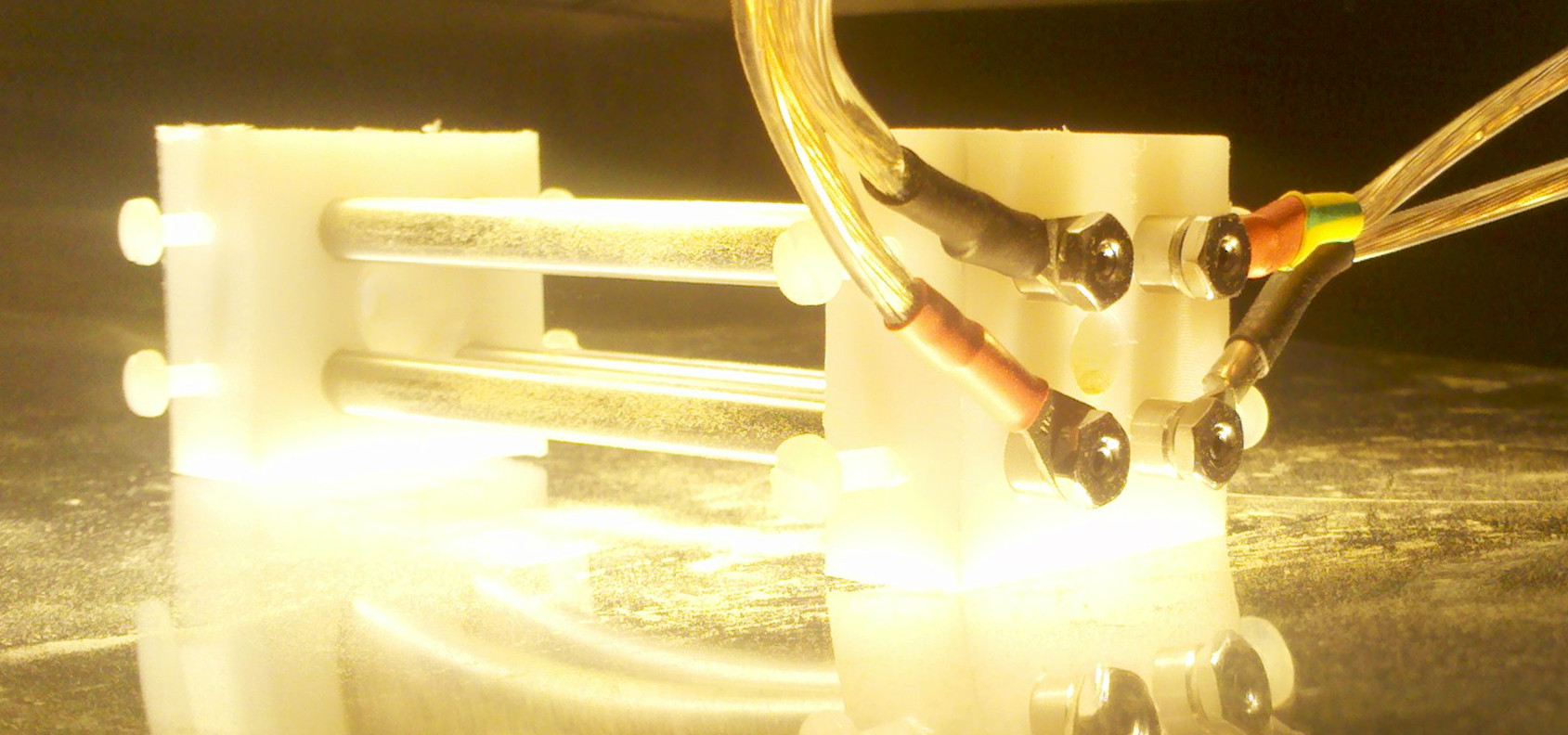Linear Quadropole Trap Design
Levitating charged particles can be accomplished relatively easily with the use of a high-voltage AC power supply and simple electrodes1.
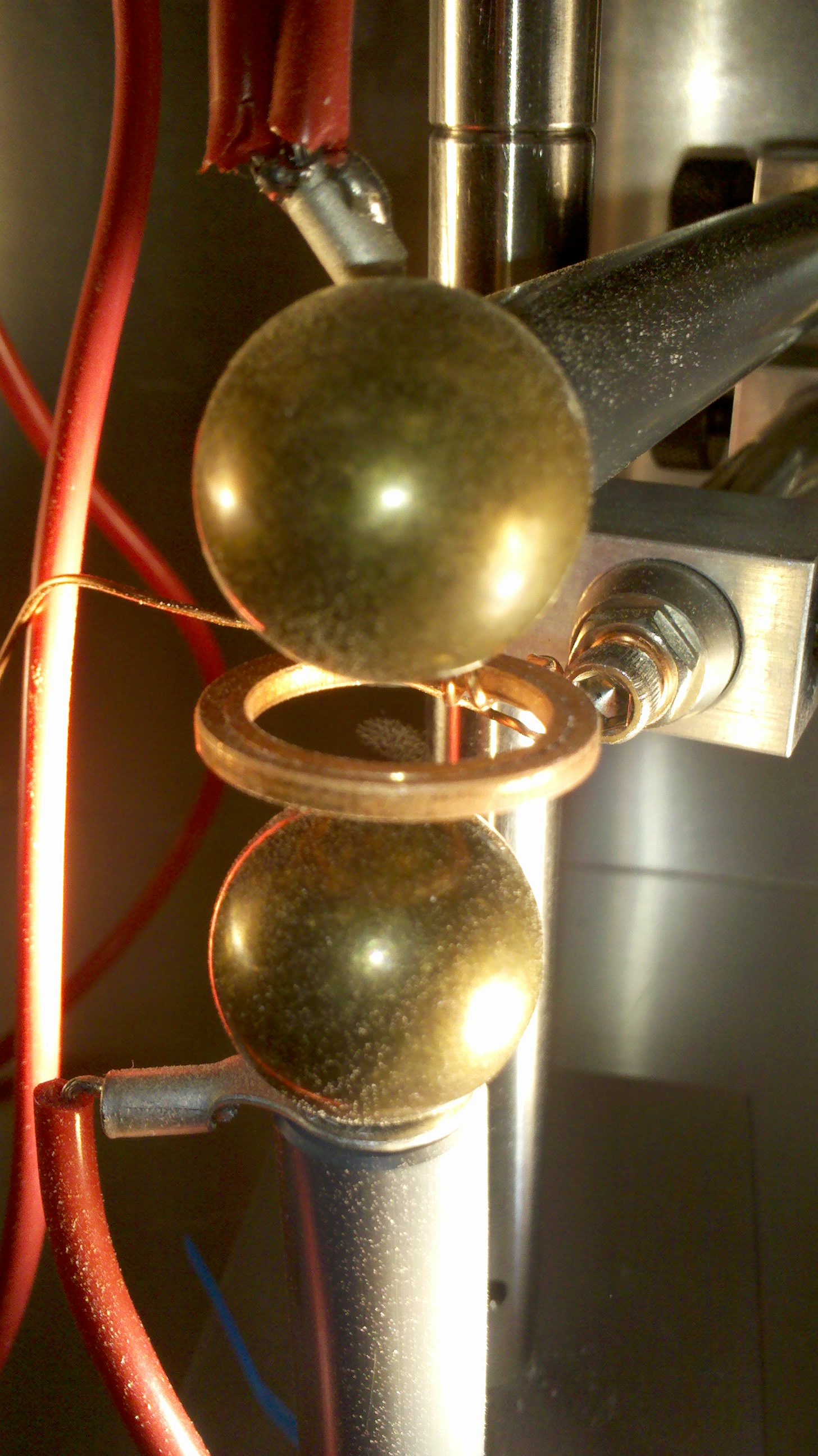 For the above demonstration of the principle of these "Paul" traps, I used a variac and a neon sign transformer along with two spherical brass electrodes and a copper ring. Lycopodium spores were used as a convinient charged particle, which can be seen levitating between the electrodes.
For the above demonstration of the principle of these "Paul" traps, I used a variac and a neon sign transformer along with two spherical brass electrodes and a copper ring. Lycopodium spores were used as a convinient charged particle, which can be seen levitating between the electrodes.
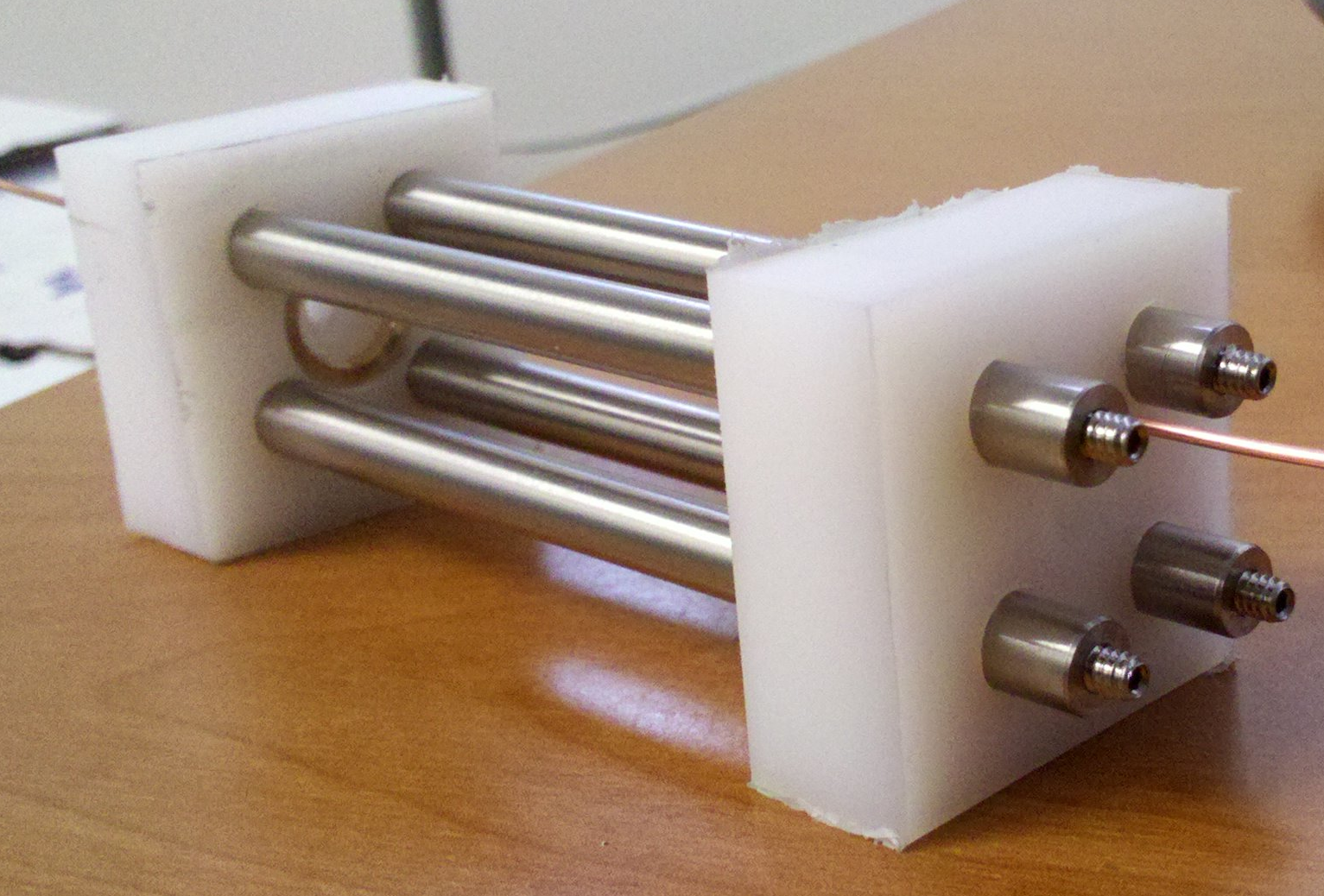 Linear trap design. See this page for. Machined plastic holds 4 off-the-shelf metal rods (from an optical cage system) as well as two brass endcap electrodes.
Linear trap design. See this page for. Machined plastic holds 4 off-the-shelf metal rods (from an optical cage system) as well as two brass endcap electrodes.
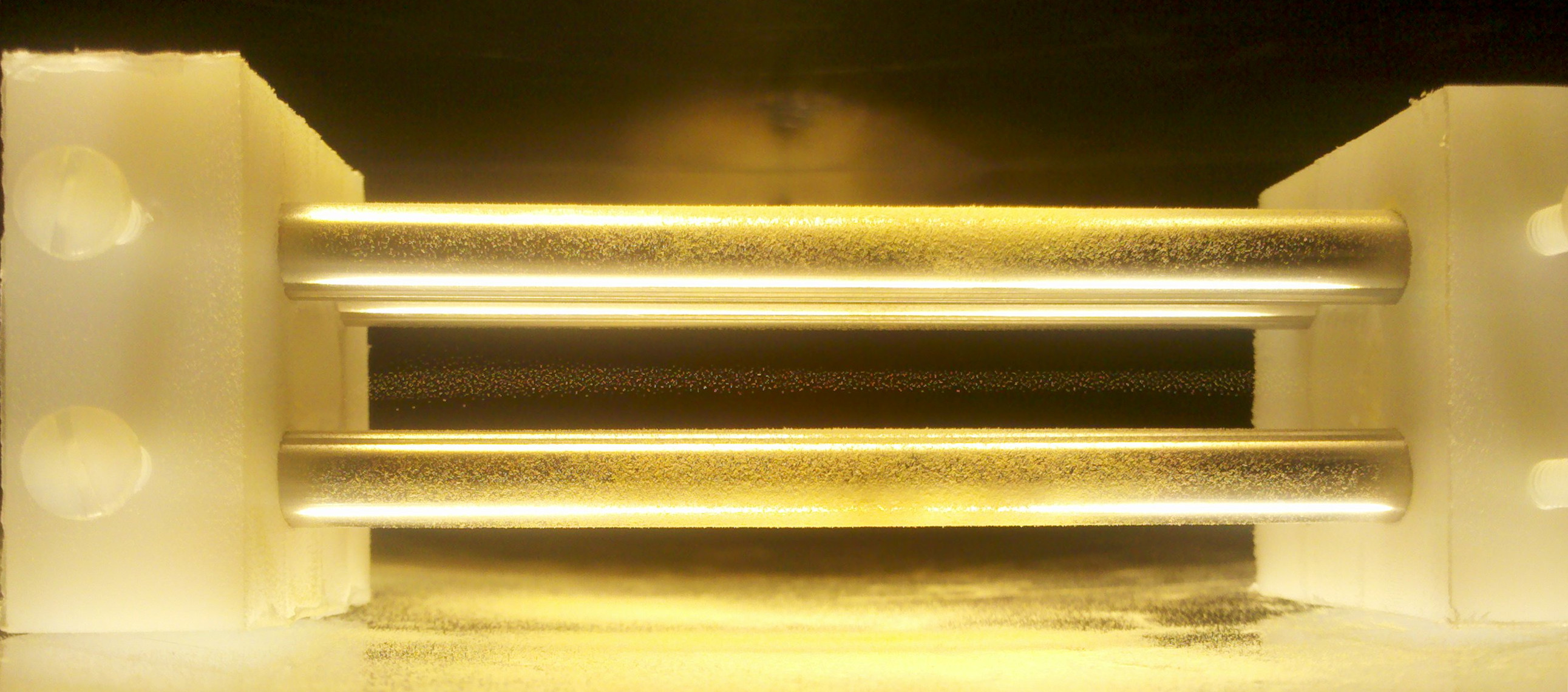 Trapping large numbers of charged particles (lycopodium spores). Click for larger image.
Trapping large numbers of charged particles (lycopodium spores). Click for larger image.
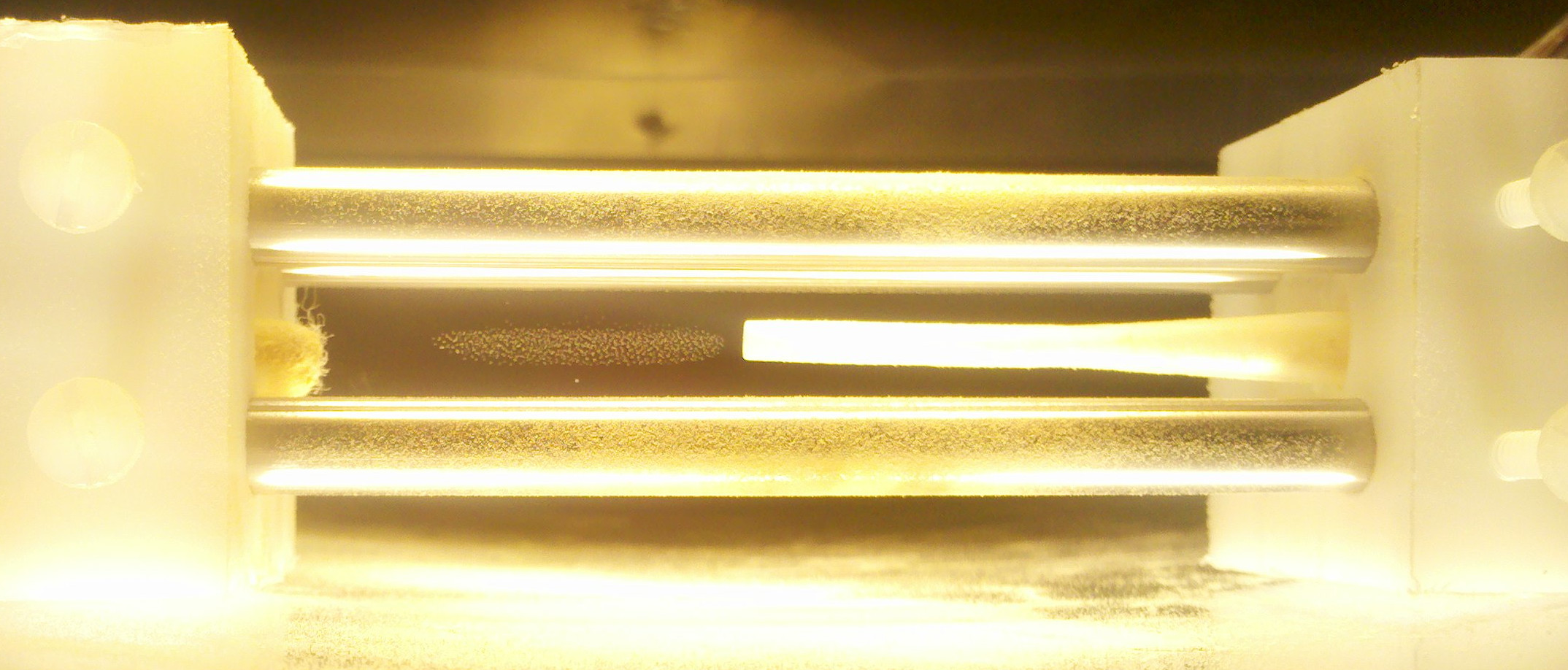 Particles manipulated into a cloud with a q-tip and plastic pipet.
Particles manipulated into a cloud with a q-tip and plastic pipet.
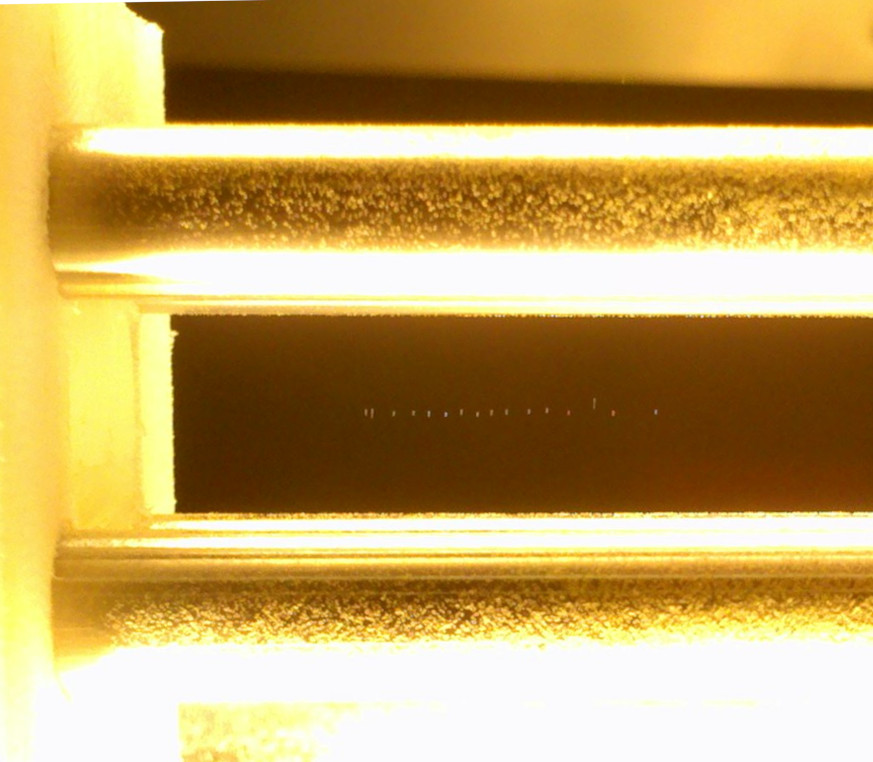 Trapping a linear chain of particles. The particles have a small periodic motion due to the oscillating trapping fields.
Trapping a linear chain of particles. The particles have a small periodic motion due to the oscillating trapping fields.
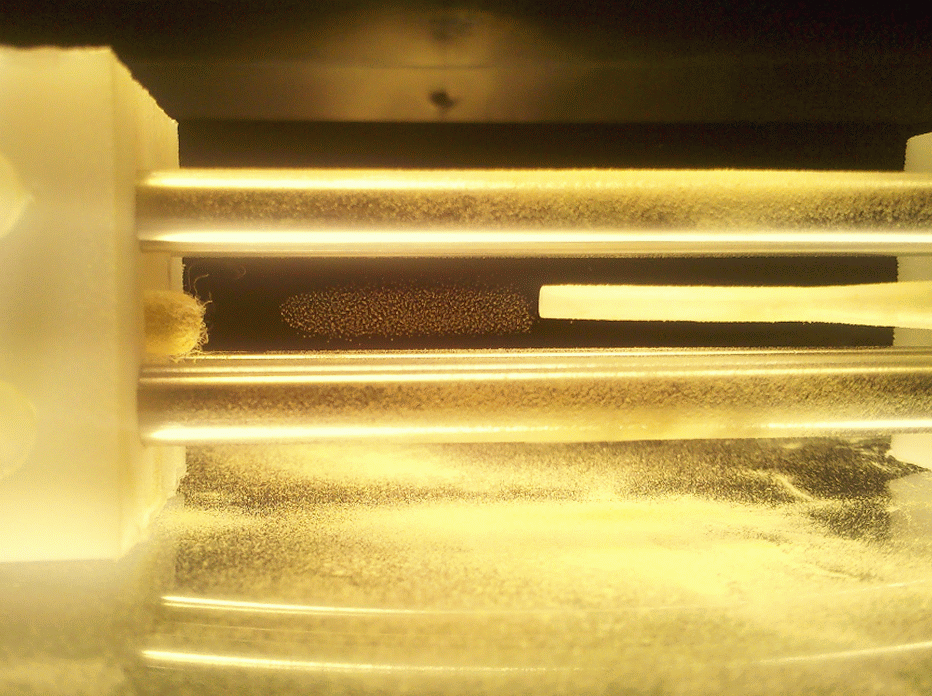 When the density of the particles is high, dynamics vortices can form, spinning rapidly.
When the density of the particles is high, dynamics vortices can form, spinning rapidly.
-
Winter, H., & Ortjohann, H. W. (1991). Simple demonstration of storing macroscopic particles in a ‘‘Paul trap’’. American Journal of Physics, 59(9), 807-813. ↩
